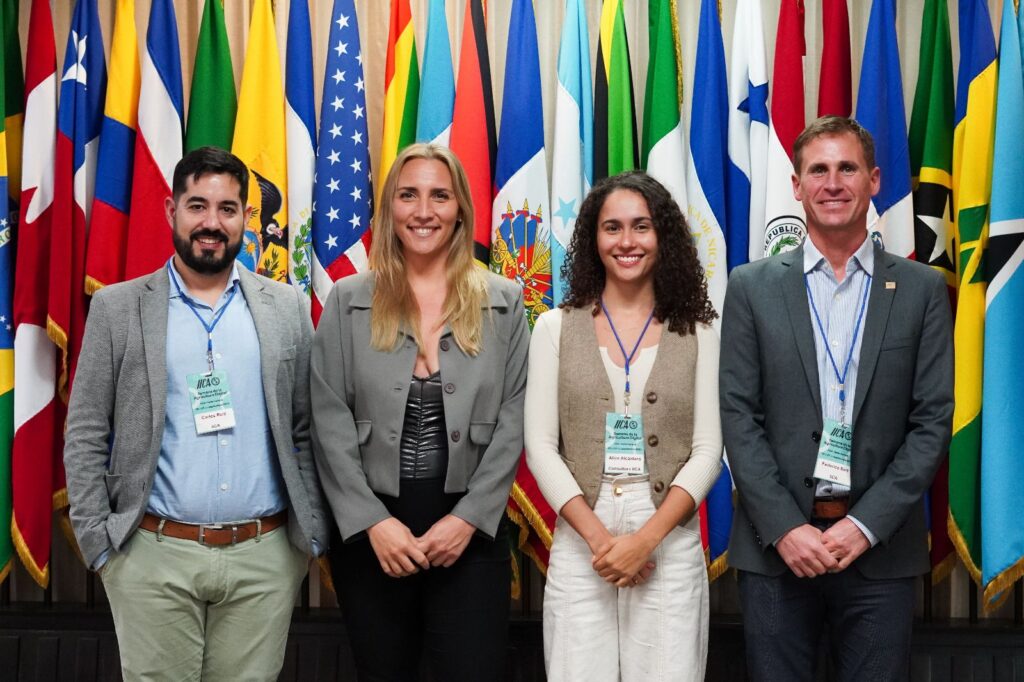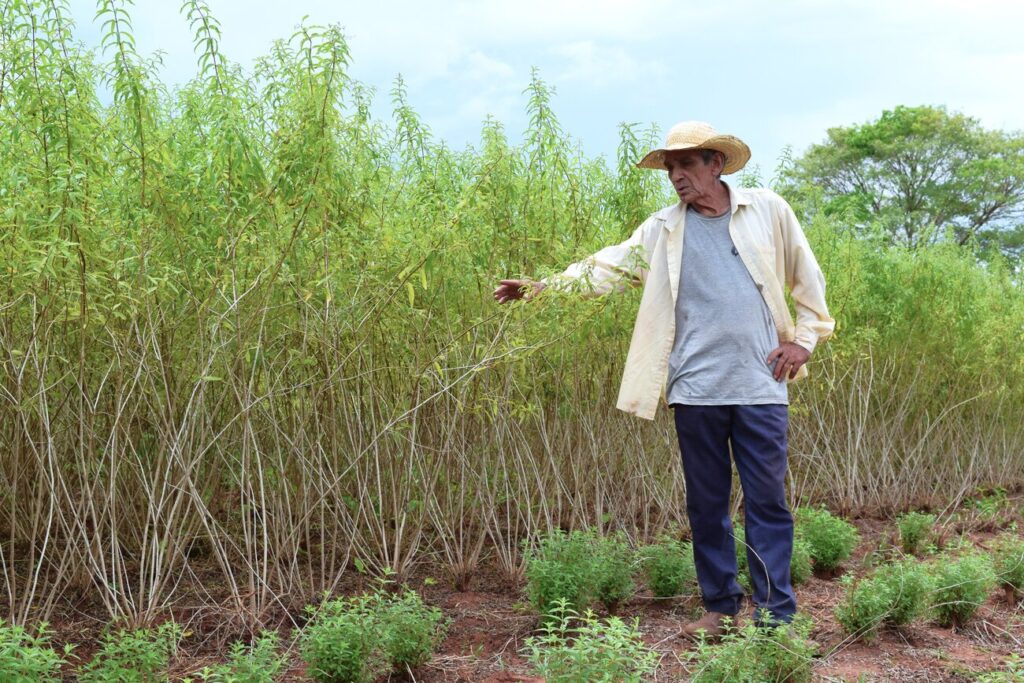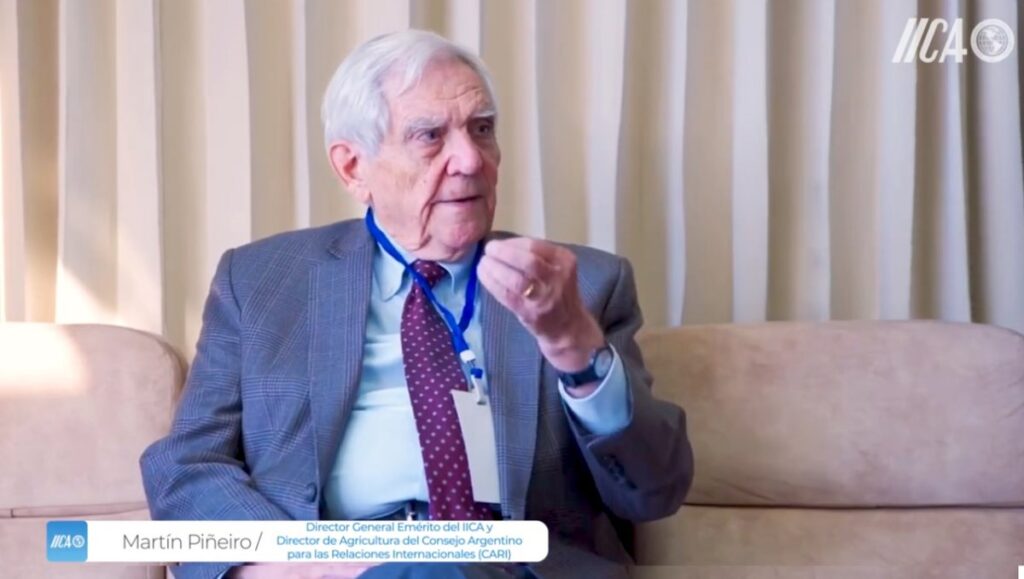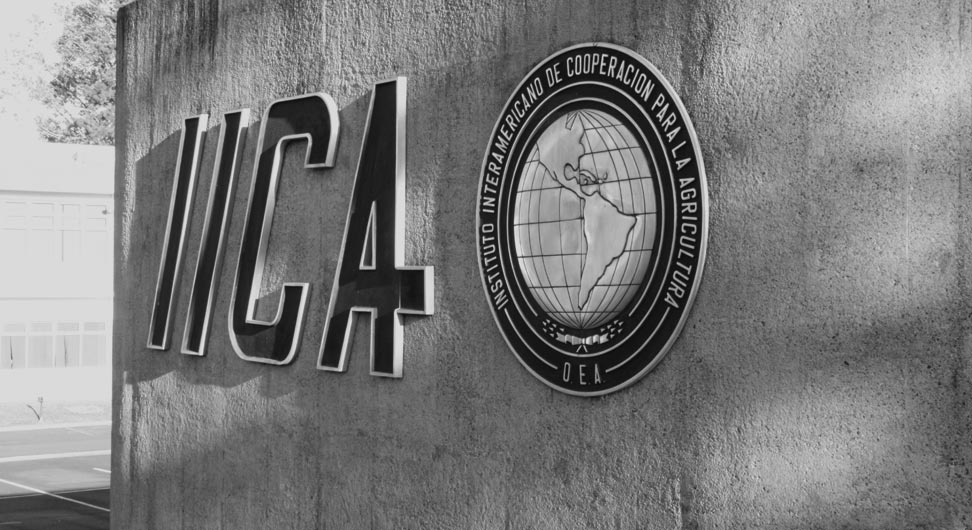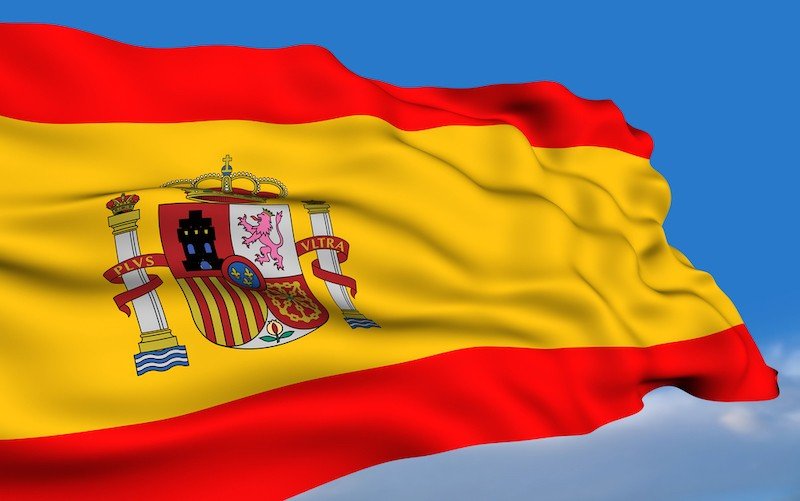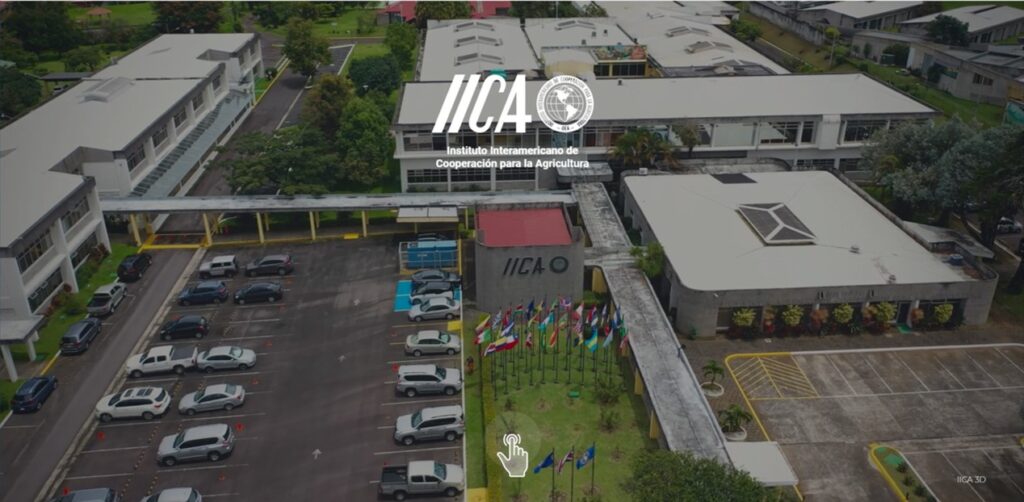En el sur de Chile se avanza hacia una producción arrocera sustentable y climáticamente inteligente, que ahorra un 80% de semillas, no utiliza herbicidas y utiliza 50% menos de agua.

Parral, Chile, 23 de abril de 2021 (IICA) – David Castillo y Washington Hernández son productores de arroz de Parral, en la región del Maule, ubicada a 350 km al sur de Santiago de Chile. Llevan más de 20 años produciendo en la forma tradicional de inundación, que es como normalmente se asocia un arrozal, bajo agua.
Este tipo de cultivo es el que tiene la huella hídrica más alta del mundo, al requerir unos 1.700 litros de agua para producir medio kilo de arroz, algo insostenible en un escenario de escasez hídrica y cambio climático.
La región del Maule se encuentra en el límite de la mega sequía que avanza desde hace 12 años y se ha convertido en un tema crítico para muchos productores. David y Washington saben que deben comenzar a adaptarse y adoptar nuevas tecnologías para seguir produciendo.
Karla Cordero, investigadora encargada del Programa de Mejoramiento Genético de Arroz del Instituto de Investigaciones Agropecuarias (INIA) de Chile, es llamada también “The Queen of Rice” (la Reina del Arroz), y ha liderado la implementación y adopción del Sistema Intensivo de Cultivo de Arroz SRI (por sus siglas en ingles System of Rice Intensificaction) en el país, que se presenta como una solución concreta a los productores de la zona y que básicamente permite plantar en seco y en forma intensificada.
Cordero cuenta que actualmente más de 10 millones de productores se benefician de esta metodología en 54 países. Originario de África, el SRI ha sido utilizado en América con experiencias exitosas en naciones de clima cálido y el desafío fue adaptarlo a un clima templado como el chileno.
“Las condiciones climáticas imperantes en la zona arrocera nacional solo permiten el cultivo de arroces tipo japónico, transformando a Chile en el productor del arroz más austral del mundo. Este clima frío estimula el crecimiento del arroz libre de plagas y enfermedades, ya que éstas no prosperan en ambientes de bajas temperaturas, por lo que el cultivo se desarrolla con baja carga química, libre de pesticidas y fungicidas. Esta característica nos diferencia del resto del arroz cultivado en el mundo que presenta múltiples aplicaciones de pesticidas para poder obtener un nivel productivo rentable”, indicó.
La investigadora lleva más de 4 años trabajando en generar datos e información relevantes y valiosos para el desarrollo de este sistema en Chile y para otros países de clima templado.
La aplicación de esta metodología fue reconocida por la prestigiosa Universidad de Cornell, Estados Unidos, que publicó en su portal de Recursos y Red Internacional SRI: “El SRI es parte de una reorientación hacia la producción sostenible, ya que permitirá avanzar en la reducción de productos químicos utilizados en el cultivo, eliminando el uso de herbicidas y, al mismo tiempo, ahorrando una importante cantidad de agua que actualmente se utiliza para el arroz”.
Desde hace varios años el Instituto Interamericano de Cooperación para la Agricultura (IICA) trabaja junto a países como Nicaragua, Costa Rica, República Dominicana, Venezuela y Colombia en la promoción, adaptación y validación de la metodología SRI como un camino posible hacia un sector arrocero más productivo, competitivo, resiliente y bajo en emisiones.
En Chile, la producción promueve cuatro principios básicos: el cultivo temprano (flexibilidad en la fecha de siembra), la reducción de la competencia entre plantas a través del control mecánico de malezas, la mantención de suelos saludables (aireación y oxigenación de las raíces) y alternancia de suelos secos y mojados.
Se trata de principios que, junto a una semilla con características de alto rendimiento, mejor calidad industrial, precocidad y adaptación a los nuevos escenarios de déficit hídrico, conformaron un arroz climáticamente inteligente que luego de dos años de pruebas y estudios experimentales está ya disponible para masificarse entre los productores.
Fernando Barrera, especialista en Extensión Rural del IICA, dijo que el desafío en esta etapa del proyecto es continuar con un proceso de investigación participativa con agricultores, extensionistas, investigadores y agentes de desarrollo.
“Vamos a trabajar en determinar la estrategia de riego a escala predial que permita de manera eficiente lograr una reducción del 50% en el consumo de agua, que ya hemos logrado a nivel experimental, ajustando el sistema de siembra en seco para lograr un uso más eficiente de la semilla y tener plantas más vigorosas, resilientes y que permitan establecer poblaciones que aseguren altos rendimientos”, indicó.
Barrera agregó que “avanzaremos en un sistema de control de malezas mecanizado, que reduzca la dependencia de herbicidas y que aporte con soluciones más amigables con el medioambiente, e identificaremos las líneas genéticas que mejor se adapten a SRI para acompañar a todos los cambios en el manejo productivo con las plantas mejor adaptadas al estrés hídrico. La idea también es trabajar en estrategias comerciales que capturen el valor de una producción más sustentable y que representa lo mejor de nuestro mundo rural”.
Según el especialista del IICA, luego de la fase experimental vendrá una etapa en la cual esta tecnología es transferida a los agricultores, proceso de extensión que contemplará herramientas y conocimiento diseñado especialmente para los productores con el objetivo de generar impacto y adherencia a esta nueva forma de producir más sustentable.
Proyecto regional, innovación y ciencia aplicada a la adaptación al cambio climático
La iniciativa, es financiada por el Fondo de Innovación para la Competitividad (FIC) del Gobierno Regional del Maule, promueve la investigación, la innovación y la competitividad en el sector. Proyecta beneficiar a cerca de 1.100 agricultores arroceros, así como a la cadena asociada al rubro que incluye a los asesores técnicos de los productores, empresas, organismos públicos chilenos como ODEPA e INDAP y de forma indirecta a todos los consumidores de arroz nacional.
Rodrigo Avilés, Director Regional INIA Quilamapu/Raihuén, indicó que en la zona de Parral se presenta la mayor producción de arroz en Chile, alrededor de un 60%. “Debido lo que hemos vivido en los últimos años por la restricción hídrica y de precipitaciones, con el programa de mejoramiento genético de arroz de INIA, en esa búsqueda por ayudar a los agricultores a adaptarse al nuevo escenario agrícola, caracterizado por el cambio climático, la escasez de agua de riego y mayores exigencias ambientales por parte de los mercados, llegamos a esta alternativa que estamos mostrando en este predio experimental en Digua junto al IICA”.
David y Washington fueron invitados a ver por sus propios ojos los avances en este sistema de cultivo por los equipos del INIA y el IICA, a pocos kilómetros de sus campos, un laboratorio al aire libre donde los investigadores del proyecto prueban sistemas de riego, semillas y manejo agronómico.
Ambos productores de la zona de Cuyumillaco conocen más que nadie el problema de la escasez de agua y cultivan cerca de 100 hectáreas que venden directamente a los molinos.
Tras conocer la metodología, ambos se comprometieron a implementarla y destinarán una hectárea de sus tierras para seguir quemando etapas hacia una migración gradual en la forma de producir, ahora con un arroz climáticamente inteligente preparado para adaptarse al cambio climático.
Más información:
Gerencia de Comunicación Institucional

